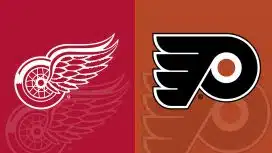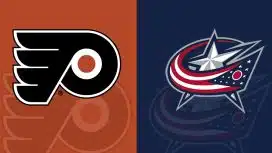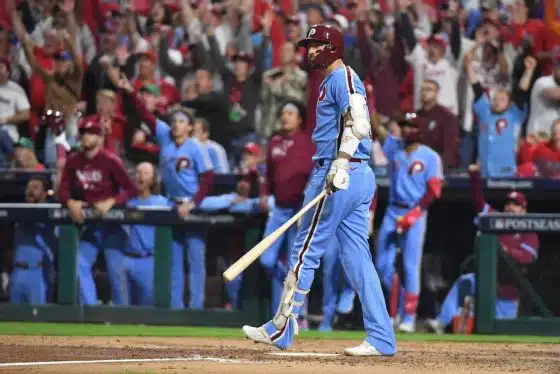Flyers
A List of New Year’s Resolutions for the NHL
By Dan Heaning, Sports Talk Philly staff writer
The season for seeking improvement and making resolutions to be better is here. As many ready their New Year’s Resolutions, it seems now would be as good a time as any to give a list of resolutions the National Hockey League should consider for 2017 and beyond.
Alter the Challenge Rule
For whatever reason, the NHL decided that taking away the only timeout of the contest for challenging a call was a good idea. This leads to coaches having to sit on their hands if the officials make a dicey decision early in the game or risk losing their timeout and challenge for the rest of the tilt.
Instead of determining coaches’ challenges like this, the NHL should consider giving the challenging team a delay of game penalty in place of losing the timeout if they’re mistaken.
This is inspired by an old NHL rule that if a coach thought a player was using an illegal stick he could effectively challenge the legality of the twig for an opportunity for a power play. However, if the coach guessed wrong and the stick was within regulations, his team would be penalized for delaying the game.
Such a rule today would give coaches the option to challenge whenever they like, but the possibility of becoming shorthanded over a missed call would keep them honest. It could potentially increase goal totals by giving out more power play opportunities or forcing coaches to be more efficient with their challenges.
It could also create a chilling effect on challenges because not many coaches would want to put their teams down a man for being wrong. However, that would mean less reviews and faster moving games. Either way, it’s a better way to go than the current NFL-influenced system.
Get Rid of Shootouts
Casual fans have been used as the human shield for keeping the shootouts. "The fans like them," the NHL has repeatedly cried. However, anyone who actually talks to a hockey fan (you know one that can tell you what icing is or can name a player on their team) will find that the shootout really isn’t all that popular. Hockey analysts and beat writers seem tired of the skills competition too. So let’s junk it, there are plenty of other options.
One such option, which fellow traditionalists will enjoy, is just reinstate ties. Were ties really that bad? Teams played three periods, maybe an overtime and if the contest couldn’t be settled, both squads got a point and the fans were free to go home and get some sleep. One of the most underrated thing about ties was the hard-fought tie on the road, the game the away team would scratch and claw just to get a point out of a game.
Going back to draws could restore the classic two points for a win, one point for the tie, zero points for a loss metric, which hockey purists would say is the best way to distribute points.
Though some may not like the idea of ties returning, so here’s another option to ensure there’s a winner every night without the need for shootouts: a "power playoff."
Essentially, each team will be given a five-on-four power play. If both teams score on the man advantage or neither of them succeed, then it’ll go to four-on-three with the first team to score winning the game. If that cannot settle the dispute, then the man advantage will increase to five-on-three followed lastly by a six-on-three with the team on the up a skater required to pull their goalie.
While that option may not be perfect, fans and experts alike would agree it’s more team-oriented than the shootout and would also lead to some very exciting power play and penalty killing situations.
Restore the Crease
Back in the day, the crease used to be a semi-circle. Fans can still see the old, glorious shape of the crease in the World Junior Championships. Yet, in the NHL it continues to be a rounded off square. The reason for the change was the infamous crease rule that disallowed any goal in which a player was in the blue paint. In some situations, goals were waved off because a player had his skate on the outside edge of the crease which did not impact the play at all.
Today, the crease rule and the rules of goaltender interference and incidental contact are subjective to say the least. It doesn’t seem to matter where the goalie is at times or what the player is doing for a goal to be allowed or waved off.
Since it really doesn’t matter if the goalie or skater is in or out of the crease, aside from looking more aesthetically pleasing, restoring the crease could have one potential benefit: fewer icings.
As it stands now, a puck shot from beyond the red line that passes through the crease is still considered icing. This was not always the case, though. If the NHL were to restore the old semi-circle crease and the "no icing when it passes the crease" loophole there would be fewer icings and, therefore, less potentially hazardous plays for the puck to prevent said icings.
Get Rid of the All-Star Game
The NHL — and pretty much every major sports league — has tried everything under the sun to make its All-Star Game bearable. The league struck fool’s gold last season by making itself the foil in the John Scott story.
However, since the NHL has instituted a rule to prevent a John Scott from ever making it to the All-Star Game again, the thing that made last season’s tilt even remotely watchable is gone.
East vs. West, North America vs. the World, captain vs. captain, a four-division round robin — it doesn’t matter what the NHL does about the All-Star Game. It’s still a lazily played exhibition that offers more groans than cries of excitement.
So, let’s ditch it. Keep the fan voting, keep the naming of the All-Star teams, keep the skills competition, but when it comes time to play the game. Don’t. And when beat writers and fans ask what happened to the game, the league could just say "we didn’t want to disappoint you."












































